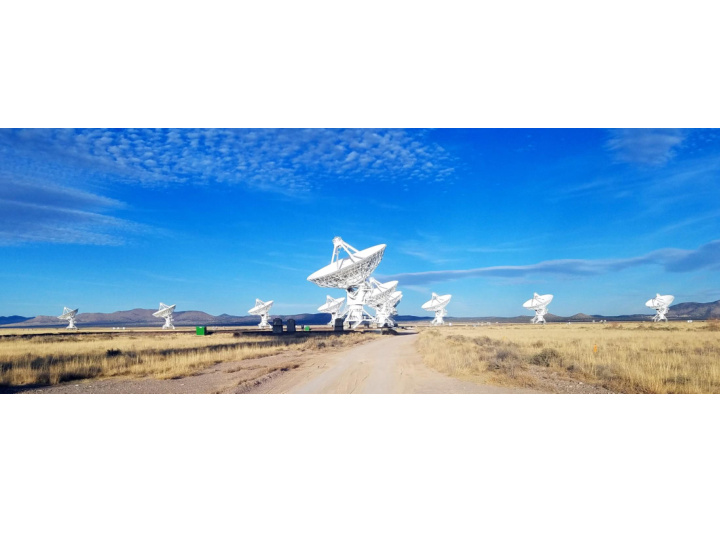



(personal journey title) ..or maybe (some sort of beginners guide to astrophotography) Tony Gomez July 15, 2020
What Astrophotography is Really About and Things to Consider so You Don’t make Costly Mistakes (with hints of being a beginner guide and a little bit of my journey) Tony Gomez July 15, 2020
Minimal Equipment for AP • Mount • Camera • Telescope/Camera Lens • Computer • Processing software
AP appropriate mounts If you are on a very Get a GEM if you Not great but will tight budget can afford one work
Field rotation
Cameras + you might have one already +cooling (low noise) +wide field +easy to calibrate -noisier +color and mono options -difficult to calibrate +easy computer control -IR cut-off filter -costs
Cameras-OSC (color) + easy to use +way cheaper to implement - can’t properly do narrowband -inefficient
Spectral response-OSC
Spectral response-mono w/ RGB Filters
OSC-narrowband Oiii (500 nm) IR cut-off filter (DSLR) Ha (656 nm) Sii (672 nm) I
OSC “narrowband” Oii G and B Ha R “ duoband ” improves S/N Better imaging with moonlight
Narrowband Oiii (500 nm) Ha (656 nm) Sii (672 nm)
Ha Sii SHO RGB Oiii + lots of processing
“Entry” Optics (wide field) Rokinon/Samyan 135mm F2 RASA 8 F2.2 William Optics ZenithStar Z61 Orion 10” F3.9 Astrograph
“Other” telescopes
Field Flatteners/Coma Correctors (+Reducers) • Makes stars in focus all the way out to the edge • Often matched to telescope • Spacing is critical • Flatteners have different reduction factors • Required (imo) for serious AP*
Image Scale (pairing camera with telescope)
Image Scale (pairing camera with telescope) Image scale = 206 * pixel size(microns) / (focal length (mm)) generally want IS to be below 2 and above 1. Seeing and tracking dependent.
FOV https://astronomy.tools/calculators/field_of_view/ (I mainly use Stellarium)
Extra equipment • Polar alignment (important for good tracking!!!) • Guiding solution • Remote computer control • Filters etc. • Focusing • Paid software • Dew heater • Flats panel • Battery bank
Current rig
Typical session 1. Very rough polar alignment using phone app to locate Polaris during daytime 2. ASPA (Celestron feature) to get decent polar alignment 3. Drift align to get very good polar alignment 4. Fine focus using autofocus routine (used to manually focus with Bahtinov Mask) 5. Build imaging sequence in NINA 6. Slew to target and platesolve 7. Start integrations when dark (about 9:45 pm) till just before sunrise (4:45am) 8. In morning, cover optics and remove everything off mount (monolithic setup) 9. Cover mount if weather is good to continue next day or break down fully. 10. Transfer data for processing 11-99. Processing
Computer control • Need laptop, mini PC or Arduino based system to control sequence and capture/store • A second remote PC means you can do everything (once set up) from the comfort of your warm/cool home.
N.I.N.A I use NINA which is open source (free) and windows based. Also used Kstars (also open source and free) with Raspberry Pi. Lots of other solutions like Voyager, Nebulosity, Maxim DL, SGP, Backyard EOS etc
Now entering processing. a.k.a. Is this photography anymore?
Calibration-Raw single sub
Calibration-Darks
Calibration-Flats
Calibration-Flat Darks
(Light-dark)/(Flat-FlatDark)*avg(Flat)
Stretching
Stretching
S/N and stacking In short Signal increases linearly with number of subs Noise decreases with the squareroot of the number of subs. So, more subs improve the S/N ratio https://www.youtube.com/watch?v=3RH93UvP358
1 sub, 10 minutes
2 sub, 20 minutes
4 sub, 40 minutes
8 sub, 80 minutes
16 sub, 2.7 hours
32 sub, 5.3 hours
64 sub, 10.7 hours
128 subs, 21.3 hours
190 subs, 31.7 hrs (properly stretched)
Satellites, hot pixels, and planes
Processing cont. If this talk were several hours longer, we could talk about 1. All the “knobs and dials” with calibrating 2. Noise reduction algorithms 3. Background extraction 4. Deconvolution 5. Ways to stretch 6. Masking 7. Combining SHO and RBG (and L to RGB) 8. Tone mapping 9. Curves transformations 10. Starless editing 11. Lots and lots more fine details
Software (that I use) Stellarium-Sky Atlas NINA or Kstars-instrument control Deepsky stacker- …stacking/calibration GIMP-(think free version of photoshop) Pixinsight – stacking/calibration/processing
Bortle Scale
Light pollution
A couple more pictures? Sure!
Final thoughts • AP is less about photography than it is about acquiring data and data processing • You can’t buy your way into a good image • AP can be insanely expensive, but it doesn’t have to be • AP can be as simple or as complicated as you will let it be. • Dark skies aren’t always required, but the sure save you a ton of time (especially with RGB imaging). • “Why bother when there is H ubble?”
Recommend
More recommend